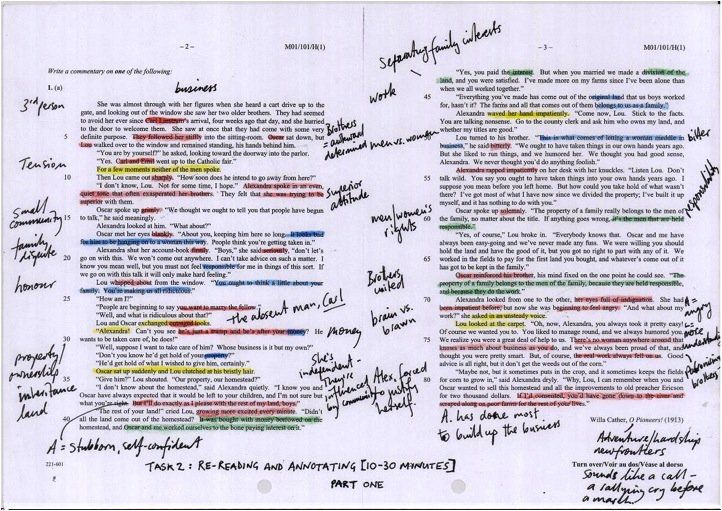“Eeeeeee!” screamed my sister at the top pitch.
She looked with disgust as if a giant cockroach was sitting on the book.
Agree; my handwriting resembles a cockroach walk, but I wasn’t writing; I was marking the book!
And my sister never marked in the book.
Her books are spotlessly clean as if just bought from the shop.
Mine is the opposite end.
I mark the 100th page with name/purchase date as soon as I touch the book!
I use a pencil, pen, marker, and highlighter, what-ever is handy for marking.
In which camp are you? Do you mark it in the book or keep it clean!
Here are few reasons, why you should mark the book.
1. Marking has a long history.
Researchers found 1566 copy of Seneca’s writing with annotation. Annotation is just a fancy or sophisticated word for marking. It’s that old. It is not a new phenomenon.
2. Marking can be completely clean!
If you are like my sister, who screams at the sight of marking, you can use Post-It notes. They come in all sizes, colors, and varieties. They stuck quickly and didn’t spoil the book. You can use them to take notes or marking in the book. Readers often use them in the library or borrowed books as well as expensive books.
3. Markings make reading an active process.
Reading is a pretty passive process. But it need not be. You can make it active.
Have a purpose for reading or have some questions in mind about the reading. You will suddenly slow down or skim some part. Your speed will vary, markings will vary. And your understanding and retention of reading material will go up. That’s active reading. You can read more about “active reading here”
4. Marking is a sign of respect for the author.
This may take little time to digest. Think about your partner, spouse, friend, or teacher. If you agree with them, you say yes, you nod. If you disagree, you say no, or explain the rationale for opposing.
And what if you ignore the person? Then you neither agree nor disagree. Neither you say yes nor no. You just ignore. Thus when you agree or disagree with the author. You are not ignoring the author; you are respecting them. You are reading actively.
Marking is just making it explicit. Here is a quote that describes it beautifully.
Marking a book is literally an experience of differences or agreements with the author. It is the highest respect you can pay to him.
-Edgar Allen Poe.
Thus marking is a way to enter into conversation with the author. You converse only if you respect.
5. Marking is creative.
Marking can be done with various pens, pencils in different colors too. You are making it visually appealing. Even on Kindle or PDF versions, multiple colors and styles are available for marking. You can set your color coding too. For example, I use Yellow for highlight, Orange for Quotes, and Blue for unknown words or phrases. Readers often develop their coding for marking; it is like a floral formula used in biology. That only biologist understands, and your code only you. For instance, star/asterisk – for critical, Single dot for the article’s objective, chapter, or topic sentence. Double dot for linkage to some other material and so on. You can find many such schemes online.
Here is how Cal Newport marks. It’s minimal and elegant.
Here are some famous authors markings. My markings are like this. Often book becomes useless for others :-).
Here is Pinterest collection of annotations. Particularly look at how Post-it stickers are used.
6. Marking is a sign of a growing reader.
The marking indicates your agreement/disagreement/linkages, questions/doubts raised.
Your conversation with the author has started. This conversation leads to a better understanding. Markings will lead to better notes, better summary, and better review in the next stage.
Marking is the first step in this growth.
Marking is a qualitative skill, a kind of art. That one develops as one keeps on practicing it.
Graduate and doctoral students are often asked to prepare an annotated bibliography.
Well-written annotated bibliographies are always in demand. Scholars even get paid (funding) to write/prepare an annotated bibliography, and they are often part of the proposal.
So are you convinced now about learning nuances of marking?
Whether you scream or scoff at markings and annotations, you must start doing and practicing it.
7. Marking preserves book.
This sounds counterintuitive—a clean book you may be sold or given.
But the marked and annotated book becomes your treasure. It has unique markings, your stamp on it; the marked book becomes priceless and thus a treasure for you.
For example, As a faculty every year, I get OB (Organization Behavior) textbook. I have freely given OB book copies to others, except my first copy.
When I studied OB first time as an FPM scholar, I bought Stephen Robbins OB Textbook. I marked it right and left, with multiple colors. The margins are used to write notes.
The book was utterly “destroyed” (in good sense!). But at the time of term – the faculty changed the text to the “Ray Andre” version of OB. I got that copy too. And it is also a heavily marked version.
So whenever anyone asked me about OB book, I gave them other editions of Stephen Robbins, but never my marked copy of the book. Thus marking preserves the book and makes it treasure!
So I guess this small write-up would have convinced you to mark the book. So get the book, pen/pencil, and start marking!
Next, we will see, how to translate markings into summaries. Stay tuned to this blog!
Bonus: A beautiful opinion piece in New York Times on Marking or annotation:
https://www.nytimes.com/2014/02/02/opinion/sunday/scribbling-in-the-margins.html





test